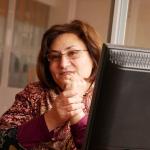High School: Challenges and Development
Primary tabs
According to the RA Law on General Education, the secondary general education in the Republic of Armenia is carried out in a three-stage system of general education:
- Primary School (grades 1-4)
- Middle School (grades 5-9)
- High School (grades 10-12)
The first two stages of the general education system together comprise the basic school (grades 1-9) , whereas grades 10-12 of the third stage comprise the high school, which may also function separately.
In 2008, one of the key directions of the 12- year general education system was considered to be the establishment of the high school. For this purpose "The Strategic Plan for the Establishment of the High School" was adopted, according to which in 2009 - 2012 part of the secondary schools in Armenia was reorganized into high schools and was subordinated to the ministry of Education and Science of RA. According to the RA Law on General Education, the RA state public schools (including secondary and high schools) are established by the resolution of the Government of RA mainly in the organizational-legal form of SNCO (State Non-Commercial Organization).
Currently, 109 high schools function in RA, with an enrollment rate of 37,503 students. According to statistical data, 45.0% of the overall high schools are located in Yerevan, where 49.9% of all the high school students attend. However, although the high school strategic plan has been adopted and its organizational-legal form has been confirmed, the high schools in Armenia are far from being accomplished.
I won't be mistaken if I state that one of the main problems of the unaccomplished high school is the contradiction and non-compliance between state educational standards, school subject syllabuses and the final examinations. State educational standards outline the minimum mandatory content of educational programs, the maximum educational load of students, and the qualitative requirements presented to the learners. And when the educational standards all over the world are clear, tangible and applicable, our state educational standardsis an extensive document. That, as a matter of fact, is basically loaded with theoretical provisions, which are not applicable, as they are not realistic.
Another matter of serious concern is that those standards often shape requirements that foster thinking ability, but, for unknown reasons, during examinations, actual knowledge is assessed. This method excludes a lot of essential knowledge, abilities and skills from teaching practice, making learning boring, lifeless and dead.
And if public education was extended by two years in order to match the international criteria or rather to educate further on, then it is assumed that the high school should at least have an environment where learners have the opportunity to create their own learning plan.
But another problem rises here. On the one hand, high schools can't develop without being autonomous, and on the other hand, there is a concern that being autonomous can lead to anarchy. One of the ways to solve this problem is that high school teachers guide learners' autonomy towards self-education and the development of their abilities and interests. It is a thing which is fixed in the educational work assessment guideline of the author educational program. According to this guideline, "It is encouraged to implement self-control and self-assessment as means of educational activity, as well as their publicizing through the media."
As a matter of fact, the "round table" organized by the 12th graders of "Mkhitar Sepastatsi" Educomplex was aimed at solving this issue. The 12th graders presented a report summarizing their first term: long term projects having been realized in media spaces and other projects realized in partnerships with various educational institutions and organizations.
Long term projects (in Armenian)
Unlike the previous round-ups, it was their first attempt to also present the civil- volunteering projects, the realization of which was carried out by our learners, along a wide variety of projects.
- Youth for development
- Ssocial entrepreneurship
- Social entrepreneurship Tapoff
- Professional Orientation
- Public TV Company Show ''Aravot Luso''
- Armenian Association of UNO
- Red Cross Association
- European young ambassadors
On the one hand, our teachers do not take part in the realization of these projects, on the other hand, our students are the participants of these projects, and they complete a bigger amount of academic work, than, let's say, they would have carried out during academic classes. There are two options. Either we turn a blind eye and refuse similar academic activities and demand that the students carry out the assignments given by the teacher (like they do in other high schools), or we highlight the work done by the students, as it was done in our high school, and which is being encouraged in the way Mr. Bleyan does: " I am interested in each and every 12th grader, with their lives and academic work, their role in the realization of their individual curriculums in the high school, the educomplex... A few days ago a project-oriented meeting was held in the high school library, and that was full of discoveries for me. The 12th graders were presenting their real-actual academic projects they had carried out, and the projects which are in the process of being carried out in the Educomplex, in the republic. The projects are open international with a wide-range of partnerships, with tangible results. The students are making money, orienting professionally, being self-determined. For me , the high school- college is an open, creative platform, a cascade, where every learner is visible and active, crosses the self-realization path through own choice, the individual path gained through experiences based on own mistakes and achievements.."
And finally, the summary reports in the form of a round-up of the first semester comprising the civil- volunteering projects realized by the students, has started to become a component of the January camps. Including such work is beneficial for two reasons: one as experience exchange, the other as presentation of completed work.

